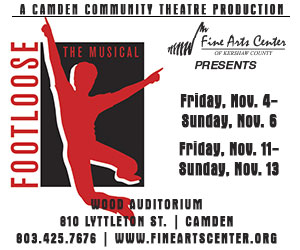Service is the New Muse
By Michaela Pilar Brown
There is a singular kind of magic that occurs when you witness someone being transformed by an experience with your art. It is a singular moment when you understand that you as an artist have the power to invoke meaningful change in the life of another. For most artists, choosing art as a career is a different kind of singularity. It is often a choice to live inside one’s own head, to spend endless hours alone with your materials and tools. It is a decision to forgo social activities, lovers, family, and friends in favor of a very demanding mistress, to incubate what you believe in your youthful arrogance will be earth-shattering answers to all of humanity’s questions. Artist residencies are advertised as an opportunity for just this kind of singular experience, the brooding artist alone with her work. There is lip service given to the idea of producing in a community of like-minded individuals, but the real selling point is time alone with your art, away from your usual distractions.
Enter the McColl Center for Visual Art, in Charlotte, where I just spent the fall rediscovering myself as an artist, as a human, and as an activist. The McColl is part of a growing trend in residency communities embracing the idea of art as service. The McColl requires each of its residents to commit to community outreach during their residency, in addition to being available in studio with an open door to greet the public three days a week. The McColl has, over its 13-year history, partnered with hundreds of community groups as diverse as the resident artists. Their open-studio policy allows the public direct access to artists in the thick of their work.
I was attracted to the residency for the traditional reasons of time and space to create, but for me it afforded the additional opportunity to have conversations about my work with new audiences. Tired of preaching to the choir, and wanting to improve my own vocabulary for discussing my work with people from all walks of life, the open-studio policy forced a hard look at how successful or unsuccessful certain symbols and narratives have been in my imagery. Engaging the public in this very direct way served to improve my communication skills but served the larger purpose of educating the public about contemporary art. This is part of the magic of the McColl experience. It serves to connect artists and audiences, keeping artists grounded in real-world experiences with people across the social and cultural spectrum.
Mothers of Murdered Offspring (MOMO) is a Charlotte-based group connecting the families of murdered individuals with wraparound services needed to help them cope with the loss. I became aware of a Florida-based version of the group in May, following the untimely death of a young man in my family. I became aware of it at almost exactly the moment I was accepting the residency at the McColl. Partnering with MOMO was a natural extension of my personal grief and an outreach opportunity. I worked with five women from MOMO: the program coordinator who combed through the thousands of family stories and pulled those she thought would most benefit from the experience; Saundra Jackson, whose daughter’s was murdered by professional athlete Ray Carruth; Dee Sumter, the founding mother, whose daughter’s murder more than 20 years prior had been the impetus for starting the group; Angela and Mika Taylor, a mother and daughter mourning the loss of their daughter and sister, respectively.
For my outreach, I proposed a series of portraits telling their stories. Experience with portraiture for a body of work focusing on unconventional beauty had exposed me to the transformative nature of the experience for the model. Portraiture is an act of shedding invisibility, of acknowledging the existence of the sitter. The portrait space is a confessional, providing a narrative that in a successful capture comes through in the images.
With each of these families, we were connecting on a human level using art as the bond. They told their stories, and I listened and captured the narrative with my camera. For Angela Taylor, whose daughter was murdered by her child’s father, the murder was fresh, less than six months old. Her grief is palpable and very present in the images. We shot for just less than an hour, and a remarkable thing happened. The more she talked about the experience, the more emboldened she became. Her posture changed, and before the session ended, there was joy.
Continuing in the spirit of transformation, I photographed a breast cancer survivor. We met in a pizza parlor not far from the Center. Amy is strikingly beautiful. At first glance, she is simply a beautiful bald woman. When I spoke to her, I saw her scars. She agreed to sit for a portrait in the coming week. During the session, she talked about the experience of finding a lump while breast feeding her then 7-month-old baby. She went through chemotherapy and was preparing for reconstructive surgery when the cancer returned. It seemed to her to be a sign that she needed to get comfortable with the body she had. She agreed to sit for a portrait believing it would help fuel her confidence, perhaps even empower her sexuality. Since having a double mastectomy, intimate moments with her husband had always involved her wearing a camisole to cover the scars.
The session started with the predictable timidity of one who is new to modeling, but as Amy danced and talked and held the props (multiple long strands of pearls, a recurring symbol of feminine beauty in my work), she was transformed. In the images, she is otherworldly and powerful. The McColl Center experience was a catapult to more directly tie service to my art production, but there are shining examples of artists and arts organizations throughout the city of Columbia with service at the core of their missions.
The NiA Company is a 14-year-old theater arts group with service at the heart of what company members do. Its mission is to bring professional theater experiences to underserved populations as new audience members, new actors, and in other volunteer capacities. Members perform as a gypsy troupe, bringing theater to audiences outside of traditional theater walls. The NiA Company recently partnered with the Columbia Housing Authority, Marion Street High Rise for Seniors, C.A. Johnson High School, Eau Claire High School, and the Historic Columbia Foundation to develop a theatrical production to disseminate newly found information about the Celia Mann cottage, a Historic Columbia Foundation property. The partnership culminated in a work presented at the Jubilee Festival in August 2011, and a lasting relationship has developed between the NiA Company and the Marion Street Seniors. The seniors are now regulars at NiA performances and together are developing new works. For more on the NiA Company, please see page XX.
Khaldoune Bencheikh is an MFA candidate at the University of South Carolina. His MFA thesis is focused on social justice and art. Bencheikh’s Reliquarium Garden, a large mosaic mural project, is providing artistic experiences to Columbia’s homeless population and school-age children. The experience has provided opportunities to get involved on all levels. A repository for ceramic donations was installed at the Columbia Museum of Art, giving everyday citizens the opportunity to contribute to a work of art. The first six panels of the mosaic were unveiled at the Columbia Museum of Art in November 2011. Bencheikh’s project is an example of the myriad possibilities for community connections. Columbia’s artistic community is growing, thriving, and leading the charge toward a new model.






.jpg)
